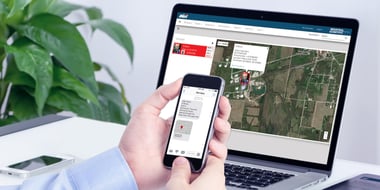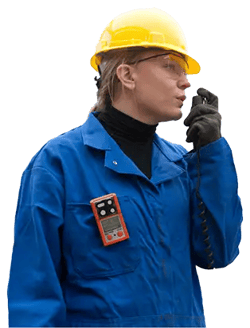 In the history of industrial safety, early methods of gas detection were rudimentary yet vital. Canary birds and flame safety lamps were once the frontline tools for detecting hazardous gases. The canary, a living detector, would react to toxic gas presence by perishing, signaling immediate danger to miners. Similarly, flame safety lamps provided a visual cue about the air quality based on the flame's behavior. These methods, although primitive, marked the beginning of real-time gas detection.
In the history of industrial safety, early methods of gas detection were rudimentary yet vital. Canary birds and flame safety lamps were once the frontline tools for detecting hazardous gases. The canary, a living detector, would react to toxic gas presence by perishing, signaling immediate danger to miners. Similarly, flame safety lamps provided a visual cue about the air quality based on the flame's behavior. These methods, although primitive, marked the beginning of real-time gas detection.
Why Real-Time Gas Detection is Critical for Workplace Safety
Real-time gas detection has evolved significantly from these early methods to more sophisticated electronic monitoring equipment. By the 1980s, gas detectors with analog and then digital readouts became common, offering precise, quantitative data on specific gas hazards. Unlike delayed lab-based analysis, real-time detection provides immediate insights, enabling workers to take swift action when hazardous conditions arise. The ability to respond to gas hazards in real-time can prevent incidents and near misses, potentially saving lives.
The Role of Live Monitoring in Enhancing Real-Time Detection
Today, advancements in technology have introduced the Industrial Internet of Things (IIoT) and live monitoring solutions, which significantly enhance real-time gas detection. Devices like Ventis® Pro5 and software solutions like iNet® Now allow safety managers to remotely monitor gas detection equipment in the field. This remote monitoring reduces the decision-making burden on workers, as trained professionals can interpret data and respond to hazards in real-time, ensuring that workers are promptly alerted and kept safe.
Features and Benefits of Live Gas Monitoring
Live monitoring solutions offer instant alerts and notifications through SMS, emails, or push notifications. These immediate alerts enable faster emergency responses, especially with features like man-down and panic alarms, ensuring that help can be dispatched without delay.
With live monitoring, gas readings can be accessed from any location via phone, tablet, or laptop. This remote access is further enhanced by 24/7 safety monitoring services, providing continuous coverage and peace of mind that someone is always watching over the safety of workers, regardless of the time of day.
Live monitoring also supports proactive hazard identification through trend analysis and heat maps. By connecting to pre-placed beacons, these systems can mark the location of hazardous exposures and send this information to the cloud in real-time. This allows safety managers to address exposure risks before they escalate into more serious incidents.
Bridging Gaps with Professional 24/7 Monitoring Services
 Despite the benefits of live monitoring, internal monitoring can face challenges such as dead zones and varying shift hours. Professional 24/7 monitoring services fill these gaps by adhering to custom escalation plans tailored to handle emergencies effectively. These services eliminate the need for manual check-ins with lone workers, providing automatic status updates that enhance both safety and productivity.
Despite the benefits of live monitoring, internal monitoring can face challenges such as dead zones and varying shift hours. Professional 24/7 monitoring services fill these gaps by adhering to custom escalation plans tailored to handle emergencies effectively. These services eliminate the need for manual check-ins with lone workers, providing automatic status updates that enhance both safety and productivity.
IIoT Technology and Cloud-Based Gas Monitoring Solutions
IIoT technology plays a crucial role in supporting interconnected gas detection systems. By storing data in the cloud, it ensures easy access and better decision-making capabilities. Reliable connections through Wi-Fi, cellular, and satellite technology guarantee that data is continuously available, enhancing the overall reliability of the gas detection system.
Overcoming Skepticism Around Live Monitoring in Safety Programs
There is often skepticism about the reliability of wireless technology in safety equipment. However, it’s important to counter the "perfect vs. good" mentality and embrace realistic expectations. No system can offer 100% assurance, but live monitoring significantly enhances safety outcomes. Worker testimonials and case studies often demonstrate how these modern solutions have improved safety in real-world scenarios.
Real-Time Detection with Live Monitoring is the New Standard
Combining live monitoring with real-time gas detection represents the new standard in workplace safety. This integrated approach elevates safety programs, moving beyond outdated methods to embrace modern, efficient solutions. By adopting these technologies, organizations can ensure a safer working environment for their employees.
Explore connected gas detection solutions today and take the first step toward enhanced safety.



